
Intercropping: Ergonomic And Efficient Farming
Intercropping is a time-honored agricultural technique. While previously it was applied with no specific knowledge, present-day farmers can reap good harvests with advanced machinery, scientific background in intercropping benefits, and precision agriculture tools. Reasons for intercropping include saving space and resources, ensuring better yields in case of poor returns of the main culture, repelling pests, reducing weeds, and providing nutrients for the neighboring plants, among others. Considering intercropping pros and cons, many landowners opt for the method even though it involves additional field treatment. Nonetheless, wise matches in intercropping combinations bring positive results.
What Is Intercropping In Agriculture?
The intercropping system employs growing several species in-between each other during the same season, alternatively to monoculture farming. Intercropping practices differ in the arrangement, sowing time, and plant combinations. Thus, perennials can grow together with other perennials or annuals, and annuals can grow with other annuals. Growing garlic alongside tomatoes is an example of a perennial-annual intercropping match. In tropical regions, coffee and banana make a popular perennial combination.
Regarding the time of seeding, plants are sown either at the same time or when other species are already flowering or ready for harvesting.
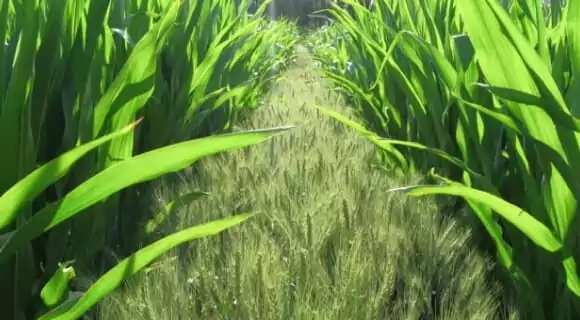
Types Of Intercropping
While planting different species together, farmers should consider their density, architecture, required period for maturing, irrigation, sunlight, and nutrient needs. Intercropping involves a certain arrangement of plants that gives the basis for its classification. Thus, intercropping types fall into the row, strip, relay, temporal, mixed, guard, alley, trap, repellant, and push-pull cropping among others.
Row Cropping
As the name suggests, plants are arranged in rows in this case. A common and beneficial combination is cereals with legumes like corn and beans. Row ratios may vary, including either single or multiple rows. A study recommends four maize rows with six soybean ones . The benefits of row cropping here include additional nitrogen fixation by legumes in symbiosis with the bacteria of the Rhizobium genus.
Strip Intercropping
What does it imply and what is the purpose of strip cropping? The practice is similar to row cropping, but the sections of land are wide enough to facilitate machine operations and to enable independent cultivations. A popular pattern of strip cropping in the U.S. is growing wheat, corn, and soybeans alternatively, six rows each.
Alley Cropping
The alley cropping system suggests growing crops in-between trees, bushes, or hedges forming alleys. The aspects of alley cropping are as follows. Higher plants protect the lower ones from winds and shelter from extra sunlight as well as prevent soil erosion with their vigorous root systems.
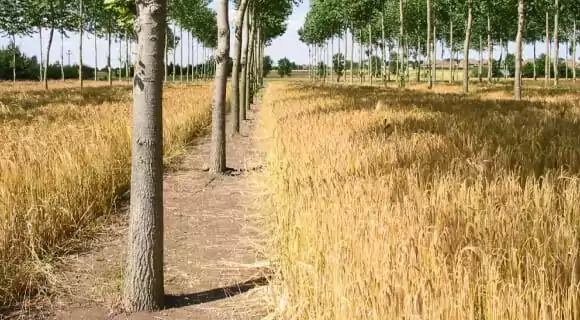
Relay Cropping
Farmers practicing this technique plant one or two more species at the same piece of land but at different times, after one crop has flowered. Relay intercropping reduces temporal overlap in harvesting different species, but the second crop must be tolerant of the shade of the first one. Examples of the relay cropping system are cotton and corn or chickpea and upland rice.
Temporal Intercropping
In this intercropping method, combined plants require different maturing time. When the fast-growing plant is harvested, the slow-growing one has more space to develop.
Mixed Intercropping
The intercropping practice involves sowing different species (two or more) in one terrain with no distinct arrangement in rows or in the same rows. In this case, the time to sow and harvest coincides. Mixed cropping gives additional protection to the primary culture from winds, frosts, droughts, and other severe weather conditions.
Trap Cropping
As the name hints, the intercropping technique aids in trapping pests to protect the main culture. Popular examples of trapping plants are mustard, marigold, among others. The basic idea is to attract insects or fungi to the sacrificial secondary crops, thus protecting the cash one. Blue Hubbard squash is reported to be an efficient remedy from squash bugs, squash vine borers, spotted and striped cucumber beetles.
Trap intercropping allows saving on pesticides with no chemical application at all or partial treatment of trapping areas. However, possible disadvantages of intercropping, in this case, include developing resistance to insecticides or uncontrolled pest nurseries.
EOSDA Crop Monitoring
Using satellite monitoring for remote fields management in one platform!
Guard Cropping
Guard crops are thorny or hardy plants growing around the cash crops or along the field edges. Crop guards are used as barriers to protect the main species from winds or invasions. For this reason, sorghum is grown around cotton or safflower around chickpea.
Repellant Intercropping
While applying this intercropping method, farmers utilize pest-repellant plants as a sustainable pest-management technique. It relies on the repellant effect of certain species, thus protecting the cash crop. The repellant deters insects from their host plant like in the case of planting leeks to protect beans from bean flies.
Push-Pull Cropping
The intercropping practice combines both trap and repellent plants for the sake of the cash crop. While trap species attract (or pull) pests, repellant ones push them away. A pattern to illustrate this technique is growing Napier grass (to pull) and Desmodium legume (to push) in order to protect corn from stem boring corn larvae.
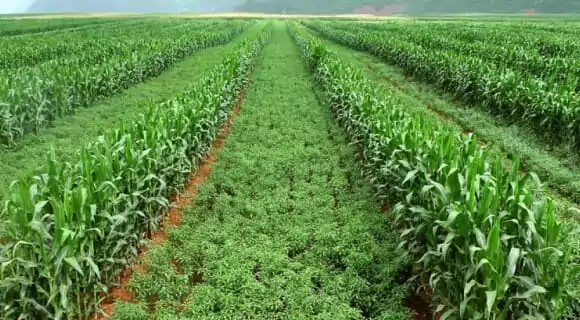
Benefits Of Intercropping
Intercropping has significant advantages over monoculture farming, which are aimed at boosting yields and more efficient usage of land and resources. The most fundamental intercropping benefits include the following:
- Increased profit. Secondary crops provide more returns and ensure profit even when the primary crop fails.
- Ergonomic usage of land. Planting species in-between rows allows utilizing the soil in a more efficient way, unlike monocropping when spaces between rows are unused.
- Protection of the cash crop. Intercropping performs several functions, either repelling or trapping pests and attracting beneficial ones as well as protecting from winds or giving shelter from extra sunlight. Pest management reduces chemical applications and thus saves costs.
- Prevention of soil erosion and crust. Plants between rows and in alley intercropping, in particular, mitigate erosion with their roots.
- Added nutrients for the main crop. Growing chickpeas, beans, alfalfa, and other crops of the leguminous family, known for nitrogen fixation, provides nitrogen for the neighboring species.
- Reduction of fertilizer applications. When intercropping cultures contribute to soil fertility, they spare the necessity to apply synthesized fertilizers.
- More efficient use of natural resources like water and solar energy as they are distributed to secondary crops as well.
- Improved weed management. Beneficial plants, not weeds, occupy vacant spaces between rows in intercropping.
- Enhanced biodiversity and ecological stability. The more agricultural species grow, the better it is for the environment.
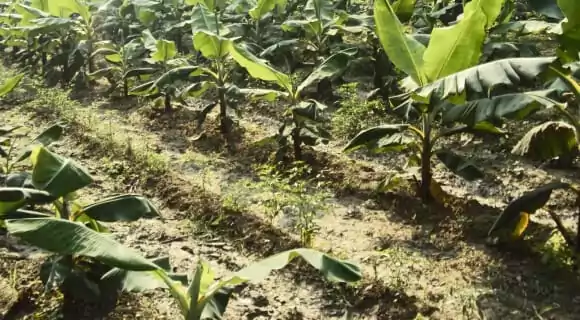
Rules To Follow In Intercropping
The basic idea in proper companion matches is to make them benefit from each other, not compete. The intercropping practice is based on principles and rules with respect to different plant families, architecture, time of maturing, growth habits (sunlight and water needs in particular):
- Combine high growing and wide growing species.
- Match shallow-rooted plants with deep-rooted ones.
- Select species with similar water needs (e.g. cabbage demanding abundant irrigation must not grow together with companions requiring scarce water supply).
- Match plants that do not compete for sunlight (one should be able to develop in the shade of the other).
- Avoid grouping crops of the same family to mitigate pest invasions. For this reason, you must not plant potatoes with eggplants or tomatoes; however, they go well with beetroots. On the contrary, combinations of different families in intercropping eliminate infestation. Thus, matches of solanaceous plants with corn reduce the movement of Colorado potato beetles (host vs. non-host crops).
- Mind possible disease outbreaks due to close interaction in intercropping. Note that pests not only damage crops physically by eating but bear viruses critical for specific vegetation.
- Add culinary herbs for the repellant effect.
- Plant legumes with non-legumes to improve soil fertility (to raise the concentration of nitrogen).
- Sow attractant intercropping species to lure pollinators.
- Choose slow-growing and fast-growing cultures. In this case, when the latter are harvested, the first ones will have enough space to develop.
- Consider allelopathic properties, which are among the main disadvantages of intercropping.
- Select plants for physical support. Beans greatly wine on corn. However, their immediate neighborhood complicates field operations.
Intercropping With EOSDA Crop Monitoring
The benefits of intercropping don’t come for free though. Competition, allelopathy, and pest control are some of the major issues to address. Plant interaction demands particular control, which is a time-consuming process and a difficult task for a human eye. In this regard, satellite-based EOSDA Crop Monitoring software provides precious information on the overall crop health in the field.
Vegetation indices aid in monitoring growth stages and detecting anomalies since each particular crop has specific values at a certain phenological stage. This correlation allows farmers to make weighted agricultural decisions. Thus, the sunflower is supposed to give a high NDVI index while flowering. Correspondingly, if it is low, it means that things go wrong, and the area should be checked.
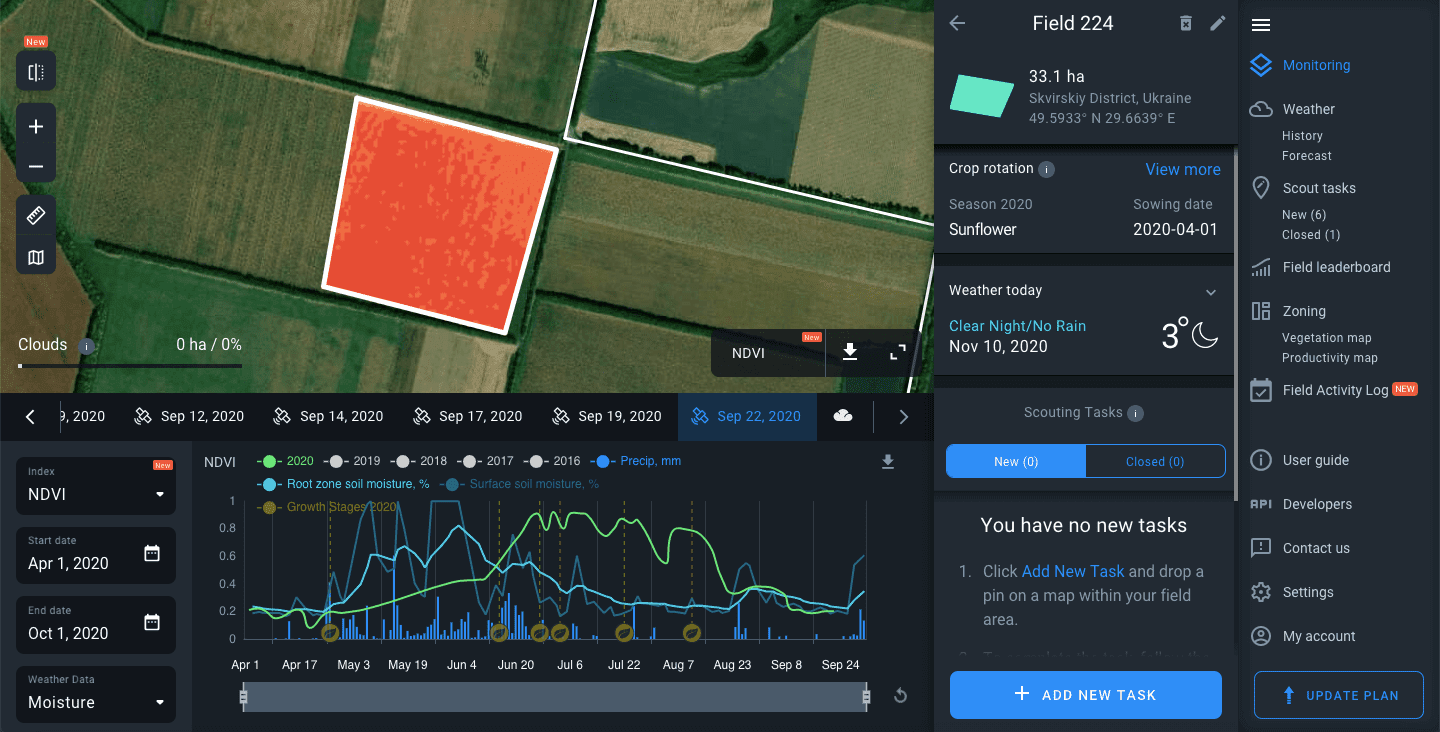
Even in this case, there is no need for farmers to do it physically as they can assign the task to the scouting app from the comfort of their offices. After viewing the problem closer remotely, agriculturalists inspect the area in person for details and proper reaction.
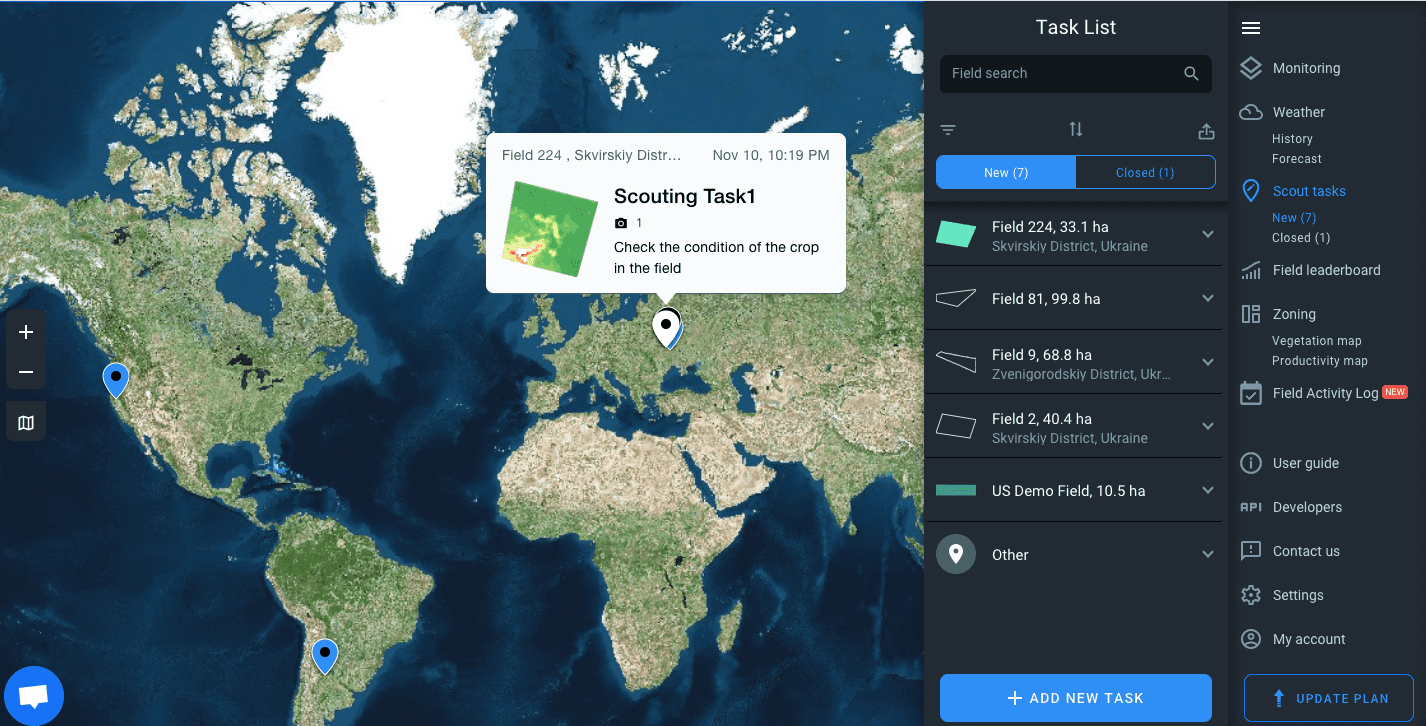
Currently, the platform assists the USA farmers in monitoring stages of plant growth for the following crops: spring barley, maize, cotton, soybean, winter wheat, pulses, rice, and sunflower. For Custom Projects to monitor crops that are not on the list, please contact the EOSDA Crop Monitoring sales team at sales@eosda.com.
Running a farming business with EOSDA Crop Monitoring is simpler, and the possibilities of the online software are not limited by the features mentioned.
About the author:
Kateryna Sergieieva has a Ph.D. in information technologies and 15 years of experience in remote sensing. She is a Senior Scientist at EOSDA responsible for developing technologies for satellite monitoring and surface feature change detection. Kateryna is an author of over 60 scientific publications.
Recent articles
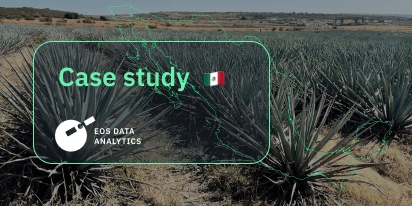
Digital Tools Improve Soil Health And Yields In Mexico
EOSDA and ITTA supported a Guanajuato farm with contour-line planning, monitoring tools, and practical guidance to reduce soil erosion and improve yields in the long run.

Analyze 2025 & Plan Your Best Year Yet: LandViewer Christmas Offer
It’s the most wonderful time of the year! The Christmas holidays are here, and so is your chance to analyze 2025 and plan a prosperous 2026 with more affordable Pro plans in LandViewer.

EOSDA Models Climate Change Impact On Sugarcane Yields
EOSDA modeled future temperature, rainfall, and other climate impacts on Veracruz sugarcane. The results help growers plan long-term adaptation strategies, including timing, varieties, and irrigation.